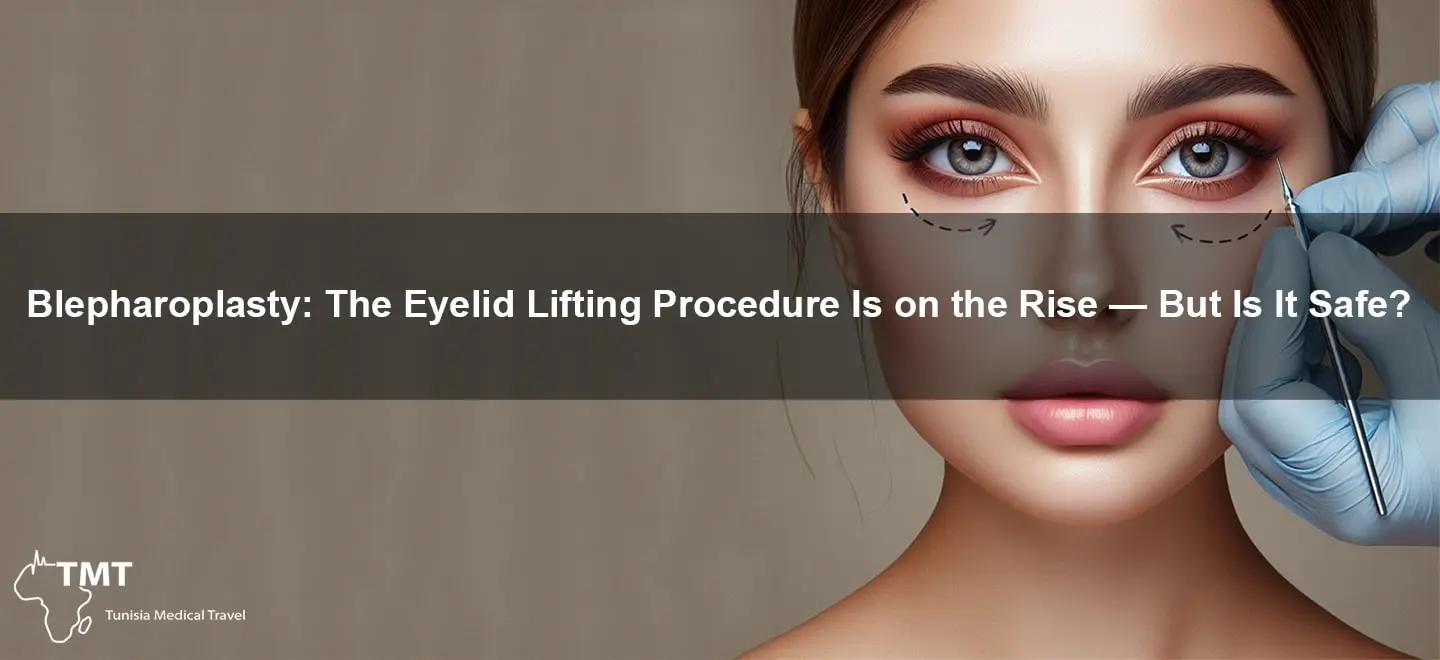Blepharoplasty: The Eyelid Lifting Procedure Is on the Rise — But Is It Safe?
Blepharoplasty: The Eyelid Lifting Procedure Is on the Rise — But Is It Safe?
What is a blepharoplasty?
A blepharoplasty, in simpler terms known as an eyelid lift, is a type of surgery that is mainly performed to treat droopy eyelids, which is a condition known as eyelid ptosis. In this type of surgery, the surgeon removes and repositions the tissues as well as the skin that surrounds the eyes and the eyelids. As a result of the surgery, the patient’s eyes look younger and more alert. It is important to note that a blepharoplasty is different from a brow lift, which is another type of cosmetic surgery that helps to stop sagging brows and also tamp down the creases found on the forehead. It is also different from a surgery known as ectropion or entropion, which is mainly performed to repair malpositioned eyelids. Just like any other cosmetic surgery, there are strict procedures and criteria to be met before someone can be allowed to take the surgery. However this is not to mean that only those who are in pursuit of beauty can go for a blepharoplasty. On the contrary actually, the blepharoplasty surgery can also be performed for medical reasons. For example, when an extreme sagging of the upper eyelids inhibits the normal upper vision, then the blepharoplasty surgery may be approved to correct this impairment. Such an instance would be it being hard for a person to see clearly when carrying out tasks like reading. Typically speaking, the blepharoplasty surgery is performed for adults who have healthy facial tissue and muscles and have realistic expectations for the surgery and the expected outcomes. Also, for upper eyelid surgery to be approved medically, a test known as the visual field testing is performed, where the extent of the obstruction on a person’s visions is determined by taking a field vision test. This can be very useful in determining whether the person should go for a blepharoplasty surgery or not. The test findings can be used to put the case forward for the surgery to be covered by medical insurance.
Who’s a candidate for a blepharoplasty?
As with any surgery, it’s important that the patient is in good health before a doctor will even consider them for the procedure. A patient’s age can be a larger factor in determining their eligibility for blepharoplasty than it might be for other types of surgery. For example, people under 35 who are considering eyelid surgery are typically doing so because they have a family history of fat deposits or bags under their eyes, which create a tired appearance. Older patients, on the other hand, are more likely to be reacting to the visible signs of ageing, such as sagging eyelids and loose skin. But regardless of the patient’s age, before a doctor will consider them for eyelid surgery they’ll need to undergo a comprehensive health assessment. This is the first step in any patient’s journey to eyelid surgery.
How is a blepharoplasty performed?
When performing an upper blepharoplasty, our attending surgeon, utilizes a technique that typically takes approximately fifteen to thirty minutes to complete. He begins by making a precise incision within the natural crease of the upper eyelid. This ensures that the scar is essentially imperceptible after the healing process is complete. Then he carefully removes excess skin, muscle and in some cases, fat, that may be bulging and impeding a patient’s ability to see clearly. Because his incision technique naturally allows for the removal of additional skin and fat. After addressing the skin, muscle and fat of the eyelid, meticulously closes the incision with small sutures. This step is of paramount importance; a poorly-performed suturing can cause irregular eyelid margins and unsightly contour irregularities. However, by using a careful and precise approach. On occasions when is addressing only the fat pockets of the lower eyelid, he utilizes a transconjunctival approach. This precise and anatomically-focused method allows to make a small incision inside the lower eyelid, thereby completely avoiding an external skin incision. The reduction of post-surgical scarring is greatly appreciated by patients, as well as the ability to recover their natural, youthful lower eyelid contour with minimal down time. After the completion of the surgical appointment, typically recommends that certain precautions be taken throughout the healing process. However, patients generally experience minimal discomfort and the results become more and more apparent in the weeks following the surgery.
What is blepharoplasty recovery like?
Basically, sleeping with your head elevated above your chest is a smart way to reduce swelling after eyelid surgery. There could be a couple of issues going on. If the swelling seems to slowly increase over time, but overall is not too terrible or terribly painful, it could be that you just have a lot of tearing postoperatively. However, if the eyelids are swollen such that you have trouble seeing out of the corners of your eyes, and the pain and swelling seem truly unbearable, then that could be a sign that you have a hematoma. A hematoma is a medical term meaning that internal bleeding has collected into a little pocket. In the case of a hematoma in the eyelid, sometimes the surgeon will need to drain that blood and sew up the source of the bleeding. After the first 24 hours, usually post-operative swelling is best managed with brief periods of cold compresses, around 20 minutes every 2 to 3 hours. This is because after the first day, any swelling that is still occurring is mostly about your body’s normal reactions to the trauma of surgery. By only applying cold compresses for short periods of time and spreading it throughout the day, you allow lymphatic drainage (which is part of your immune system’s way of clearing the plumbing, more or less) to continue relatively uninterrupted. Cold compresses help constrict blood vessels and limit initial swelling. As the swelling goes down, they also provide a bit of pain relief as your body starts to heal. However, you do not get nearly the same benefits if you try to do just one or two marathon sessions of cold; the danger there is you could accidentally refuel up any swelling that had a chance to go down. When using cold compresses, a cloth dampened with cold water and then frozen (in a plastic bag or something similar that is sealed to prevent frost buildup!) seems to hold the cold longer than gel masks or ice packs. And of course be gentle and kind to your new eyelids; after the surgery they’re not quite as strong and resilient to bruises and minor injuries as they would have been before, and we want to avoid any chance of damaging that beautiful new you.

What risks are associated with blepharoplasties?
Some of the risks and potential complications associated with eyelid surgery are going to be introduced. These would include infection, bleeding, an adverse reaction to the anesthesia, scarring, unsatisfactory results, raised white lumps that form along the suture line, an ectropion which is where the lower eyelid pulls away from the eyeball or a mucous discharge that may affect vision, a retrobulbar hematoma which is a collection of blood behind the eyeball and can cause damage to the optic nerve, and a xanthelasma. This is where yellow, fatty deposits form under the skin. All of these potential risks and complications would be discussed during the consent process. Patients would also be informed that there may be other potential risks and complications related to the surgery, that at the time of the initial assessment for the surgery their general health was considered to be satisfactory, and that they understand the procedure and the reasons for it. Also covered would be the expected and possible benefits, material risks and especially those that are specific to the surgery, serious or frequently occurring complications, and the risk of a successful outcome. The consent process provides an opportunity for surgeons to communicate effectively with patients, building a trusting relationship with them and valuing them as individuals. Surgeons have to ensure that a patient has validly given their consent, that they are competent to do so, and that the consent has been voluntary and informed. Surgeons themselves need to discuss the potential risks and complications with the patient and for further details to be available in the literature; but it is important for the patient to have the additional opportunity to discuss the procedure, the risks and the reasons behind it during a consultation. Surgeons are expected to document all discussions regarding risks and complications in the consultation notes.
How much does a blepharoplasty cost?
A blepharoplasty cost depends where the procedure is being done. The price of the cosmetic surgery can differ from one state to another and depends on several factors include the plastic surgeons fees, anaesthesia, operating facilities and equipment, prescriptions for medication and other miscellaneous surgical expenses. In 2005, the national average for the surgeons fees was about $3,000 but the charge usually starts from $2,200 to $4,500. Anaesthesia costs generally scope from $400 to $700 per operative session. The cost may depend on the experience and expertise of the surgeon, the type of procedure being performed, the advisability of doing the procedure at the surgeons office instead of at a hospital or other facility and the location of the office or the patients geographical area. In addition to the procedure charge, there may also be charges for non-surgical procedures, diagnostic procedures, post-surgical external eye photography and lifetime microscope examination slides. Insurance companies dont cover the cost of cosmetic blepharoplasties but might pay for an amount of upper eyelid lift when it obstructs the vision or cause visual field defect. Every policy is different and so you should check with your own insurance company to know further if you think that you might get coverage that is based on medical needs and not on cosmetic reasons. So, when you add up all the expenses, the total cost can be higher but in some cases, the patients cost can be less if he or she has his surgery at a doctors office surgical facility. Also when the procedures are paid in cash, he or she may be able to cut his or her cost somehow. Most doctors do offer financing through different financial institutions to make the surgical costs more manageable. Some of these financial institutions also extend the services through internet to accept credit applications from every states in the United States. Also ask for financing options available, the surgeons office personnel will be glad to provide answers to any of the surgery payment and financing questions. For example, if a patient has been thinking of having an eyelid surgery for years but enquiry about the price is his main concern, the surgeon office staff can guide him on how to apply for financing such as with CareCredit that may provide him with no interest option for up to 18 months and easy monthly payments.

